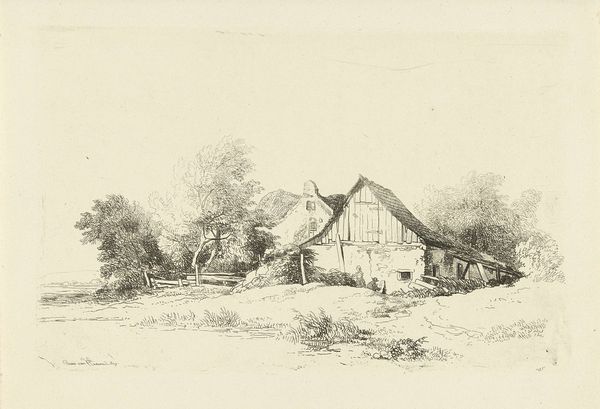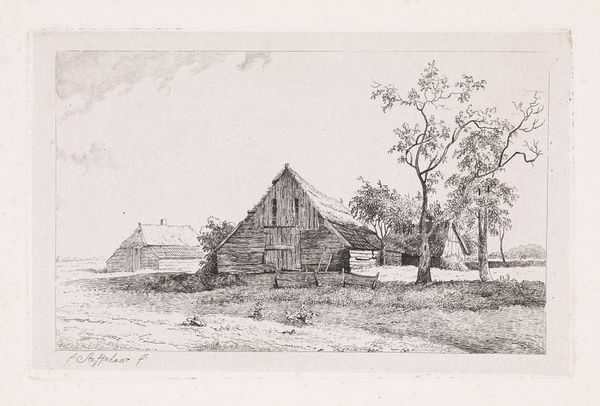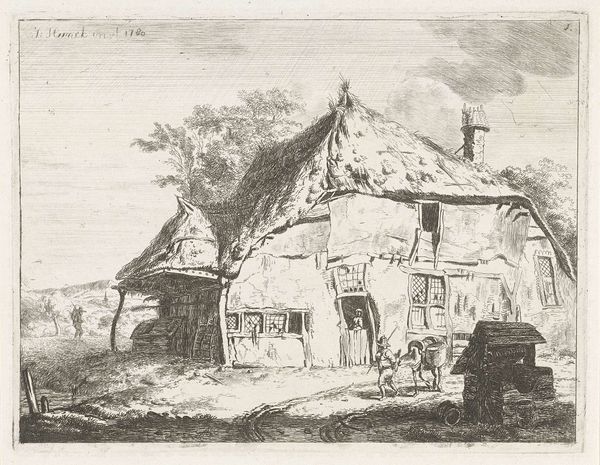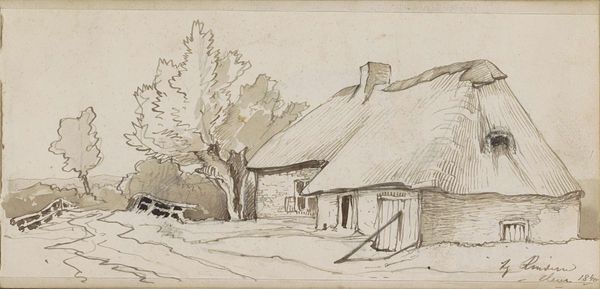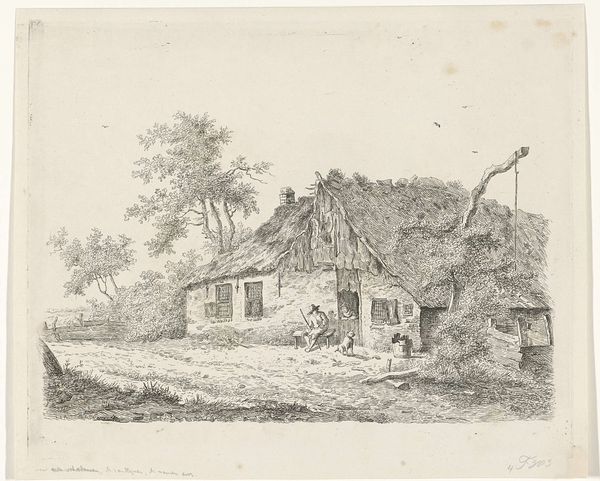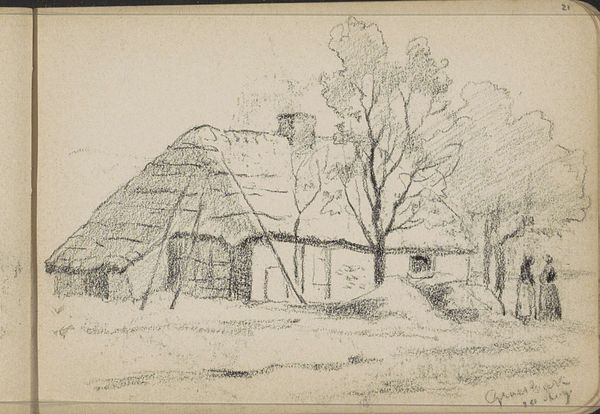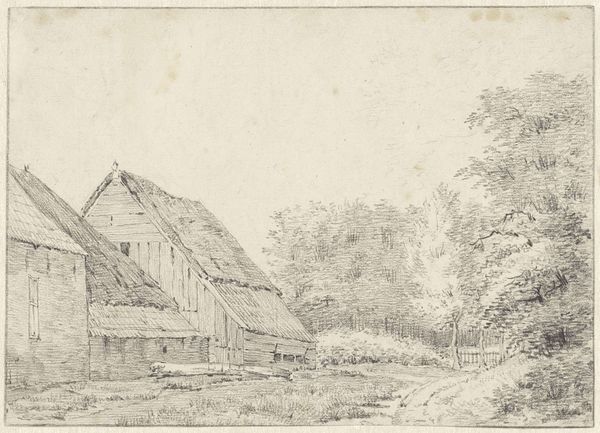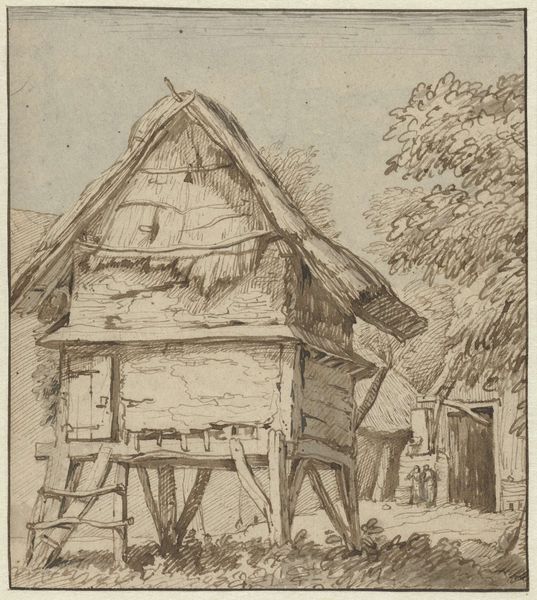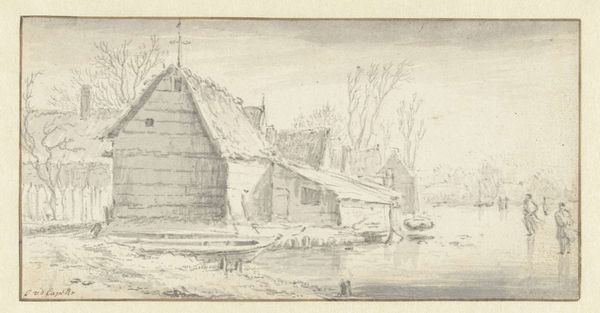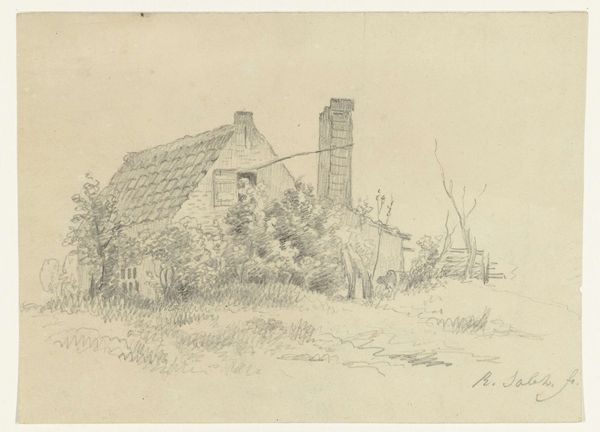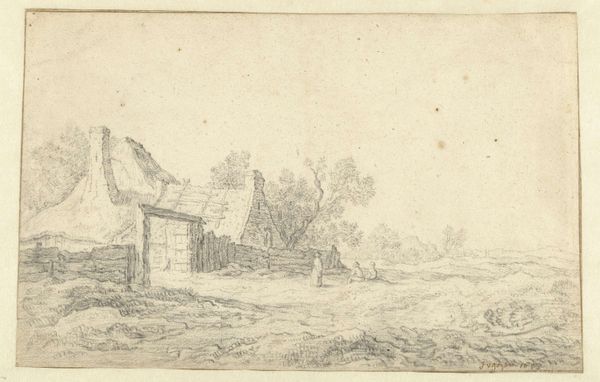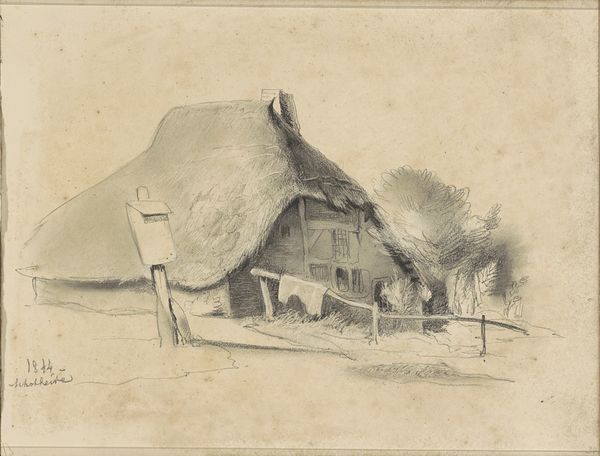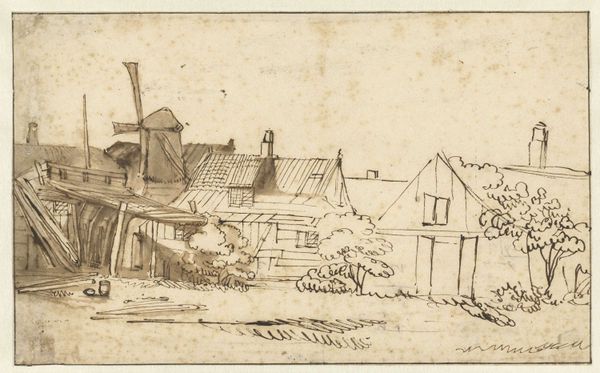
drawing, pencil
#
drawing
#
neoclacissism
#
pencil sketch
#
landscape
#
pencil
#
realism
Dimensions: height 251 mm, width 442 mm
Copyright: Rijks Museum: Open Domain
Curator: This detailed pencil drawing, titled "Boerderijen", dates from between 1759 and 1799, and is attributed to Steven Goblé. The artwork depicts a collection of farmhouses in what appears to be a rural landscape. Editor: It strikes me as quite melancholic. The scene feels very still, and there's a sense of neglect in the weathered state of the buildings and leaning stacks of wood. It whispers stories of forgotten labor and rural decline. Curator: I see it more as a close observation of vernacular architecture, a visual record of the material conditions of rural life. The artist has meticulously captured the textures of the thatched roofs and the wooden construction. Goblé focuses on craft. He seems fascinated by the textures and materials; the labor literally constructed into these structures. Editor: But consider the social context of the time! We're talking late 18th century, a period of immense social upheaval. Land ownership, class divisions, and rural poverty were major issues. Can we read this drawing as a comment on the inequalities inherent in the agrarian system? Perhaps the artist is subtly highlighting the lives of those tied to the land? Curator: While it's tempting to interpret the scene through a socio-political lens, I wonder if we’re projecting too much onto a drawing whose primary focus is documenting the architectural features and construction methods of these farm structures. These drawings are quite matter-of-fact. The pencil strokes feel purposeful, economical; like a craftsman recording how something is put together, or how its components are wearing and changing. Editor: Even in its understated presentation, "Boerderijen" presents the effects of labor and place. We can see the labor that was spent creating it—these places people called home. It asks a question, whose lives made this landscape, and where have they gone? Curator: An intriguing idea; the ghost of labor within a seemingly neutral study. Editor: It's precisely that tension between documentation and implicit commentary that makes "Boerderijen" so compelling.
Comments
No comments
Be the first to comment and join the conversation on the ultimate creative platform.

